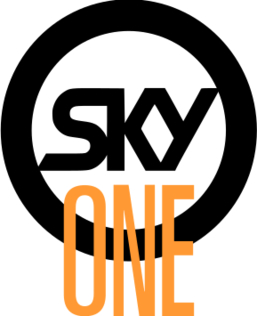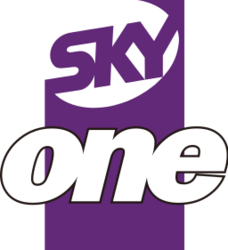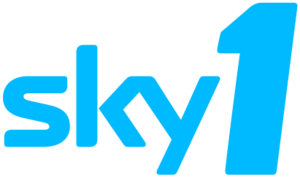Timeline of Sky One facts for kids
This is a timeline showing the history of Sky One, a popular TV channel in the UK and Ireland, and its related channels.
Contents
The 1980s: Starting Up
1980
- In 1980, Brian Haynes started a company called Satellite Television Ltd. (SATV). He planned to create a TV channel that would broadcast across Europe using satellites.
1981
- On October 21, 1981, SATV began testing its broadcasts. They used a special satellite to send out one hour of entertainment each night. Because the satellite wasn't very strong, the channel could only be seen through cable TV systems.
1982
- On April 26, 1982, Satellite Television officially launched across Europe. It was sometimes called Super Station Europe. At first, it was only available in a few countries like Norway, Finland, Malta, Switzerland, and West Germany.
1983
- On June 27, 1983, News International became the main owner of Satellite Television. This helped the channel broadcast for more hours and reach more countries.
- On October 16, 1983, Satellite Television started broadcasting in the UK.
1984
- On January 16, 1984, Satellite Television changed its name to Sky Channel. It also started making its own shows, mostly for children and music fans.
1985
- On July 20, 1985, Sky Channel launched Fun Factory, a block of children's shows on weekend mornings.
1986
- On September 1, 1986, The DJ Kat Show began. This was another block of children's shows that aired on weekdays, both in the morning and late afternoon.
1988
- On June 8, 1988, Rupert Murdoch announced plans for a new four-channel TV service. This service would use the new Astra satellite, and Sky Channel would be one of the channels.
1989
- On February 5, 1989, Sky Television officially launched. It included Sky Channel, Sky News, Sky Movies, and Eurosport.
- On July 31, 1989, Sky Channel became a service only for the UK and Ireland. It was renamed Sky One. For a short time, some of its old European shows were still shown as Sky Europe.
- Sky One started making more of its own shows, beyond just music and kids' programs. These included a morning show called Sky By Day and game shows like Blockbusters.
The 1990s: Growing Up
1990
- From January to March 1990, Sky One showed live cricket matches from England's tour in the West Indies. This was the first time a full overseas cricket tour was shown live in the UK.
- On September 2, 1990, Sky One started showing the American cartoon The Simpsons. This was part of a plan to show more new and popular programs.
- On November 2, 1990, Sky TV and BSB merged. The new company was called BSkyB.
- On December 2, 1990, Sky One launched on the Marcopolo satellite. It took the place of BSB's entertainment channel, Galaxy.
1992
- On December 31, 1992, Sky One stopped broadcasting through the Marcopolo satellite.
1993
- On September 1, 1993, Sky Multichannels launched. This meant Sky One became a channel you had to pay for.
1994
- On September 11, 1994, the last episode of the children's show block Fun Factory aired after nine years.
- Sky One started making music shows again, like The Coca Cola Hit Mix. This show had music news, guests, competitions, and phone-ins.
1995
- On January 9, 1995, Sky One began broadcasting 24 hours a day. Overnight, it showed music videos called Hit Mix Long Play.
- On December 31, 1995, The DJ Kat Show was cancelled after almost ten years.
1996
- On September 1, 1996, Sky 2 launched as an evening and overnight channel. Sky One changed its name to Sky 1.
- In October, Sky One showed fewer children's programs. Many of these shows moved to the new Fox Kids Network channel.
1997
- On August 31, 1997, Sky 2 stopped broadcasting. Sky 1 went back to being called Sky One.
- On October 14, 1997, the first episode of the football drama Dream Team was shown. This show would air for the next ten years.
1998
- On October 1, 1998, Sky Digital launched. This was a new way to watch TV using digital signals.
- On November 15, 1998, a rival digital TV service called ONdigital launched. Sky One was also available on this service.
=2000s: Digital Age and New Channels
2000
- A special version of Sky One was launched just for Ireland. The only real difference was the commercials and show promotions.
2001
- On September 27, 2001, Sky One became the last channel to stop broadcasting using old analogue satellite signals. Sky had planned to switch off earlier but waited to give customers more time to switch to digital.
2002
- On May 1, 2002, ITV Digital stopped broadcasting. This meant Sky One was no longer available on regular digital TV (Digital Terrestrial Television).
- On December 9, 2002, Sky One Mix launched.
2003
- In June 2003, Sky One started broadcasting in 16:9 widescreen, which is the wider picture format we see today.
2004
- Sky One Mix was renamed Sky Mix.
2005
- On October 31, 2005, Sky One Mix was renamed Sky Two. Also, Sky Three launched. Sky Three mainly showed programs from Sky One and other Sky channels to encourage people to subscribe to Sky.
2006
- On May 22, 2006, Sky launched its high-definition (HD) service. Sky One HD and Sky Sports 1 HD began broadcasting with much clearer pictures.
2007
- On March 1, 2007, Sky channels, including Sky One, stopped broadcasting on Virgin Media. The two companies could not agree on a new deal.
- On June 3, 2007, the final episode of the drama series Dream Team aired. It had been on TV for almost ten years.
2008
- On August 31, 2008, Sky One, Sky Two, and Sky Three were renamed Sky1, Sky2, and Sky3.
- On November 13, 2008, Sky channels, including Sky One, returned to Virgin Media.
The 2010s: Changes and New Content
2010
- From May to August 2010, Sky Two experimented with showing programs from Sky One one hour later.
- In August, some factual and reality shows from the closed Sky Real Lives channel moved to Sky Two.
- On August 23, 2010, Sky 3 +1 launched, showing Sky 3 programs one hour later. An HD version of the channel also launched.
2011
- On February 1, 2011, Sky1 and Sky2 were renamed Sky 1 and Sky 2.
- On February 2, 2011, Sky3 was renamed Sky 3.
- After the channel Bravo closed, some of its science-fiction, drama, and documentary shows moved to Sky Two.
- On February 28, 2011, Sky 3 closed and was replaced by a new channel called Pick TV.
2012
- On July 17, 2012, Sky launched Now TV. This service lets people watch Sky TV shows and movies online without needing a long contract.
- On November 12, 2012, Sky One launched a +1 channel. This channel showed Sky One programs one hour later, but for legal reasons, The Simpsons was not shown on the +1 channel.
2014
- On January 1, 2014, Sky One was temporarily renamed Sky Onesie. This was a fun way to encourage viewers to relax in their onesies after New Year's Eve celebrations.
2017
- Sky One started showing some sports coverage. This included parts of Soccer Saturday, highlights and occasional live coverage of Formula One racing, and some live football matches.
- In 2017, Sky One also began focusing more on comedy and drama shows.
- On October 9, 2017, Sky's entertainment channels changed their look. As part of this, the names Sky One and Sky Two were brought back after nine years.
2019
- In the summer of 2019, Sky One showed highlights of the 2019 Cricket World Cup, including the final match. It also showed live coverage of England's matches in the 2019 Netball World Cup.
The 2020s: A New Chapter
2020
- On August 27, 2020, Sky Replay replaced Sky Two.
2021
- On September 1, 2021, Sky One closed down after almost 40 years. Most of its popular shows moved to a new channel called Sky Max.
See also

All content from Kiddle encyclopedia articles (including the article images and facts) can be freely used under Attribution-ShareAlike license, unless stated otherwise. Cite this article:
Timeline of Sky One Facts for Kids. Kiddle Encyclopedia.








